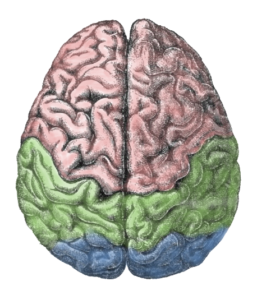 So, somehow I got on Myra Roldan‘s #MyraMonday question list. She asks a question every Monday, dobbing in some likely (or, in my case, gullible) victims to respond. And I do (unusually ;), because occasionally it’s good to challenge your mind. This past week, the question was particularly interesting: about what you’d do if there weren’t elearning. Of course, there were the usual answers, but several were very interesting. Here’re some of the ideas and underlying thinking about activities ‘beyond the course’.
So, somehow I got on Myra Roldan‘s #MyraMonday question list. She asks a question every Monday, dobbing in some likely (or, in my case, gullible) victims to respond. And I do (unusually ;), because occasionally it’s good to challenge your mind. This past week, the question was particularly interesting: about what you’d do if there weren’t elearning. Of course, there were the usual answers, but several were very interesting. Here’re some of the ideas and underlying thinking about activities ‘beyond the course’.
So, I had heard about someone who was exploring ‘escape rooms’ for learning. (Spoiler: it was Myra, hence the question. ;) I was reminded, however, and added in some other ideas:
surprise box, host a murder, scavenger hunt, choose your own adventure…
My thinking is that there are lots of ways of invoking intent and action, and providing feedback. The box could contain some content and instructions, e.g. “film yourself doing…” or “do X and write it up”. Or some actual device to act upon (think of the old science kits they sent with correspondence courses). Host a murder mystery party would be some Live Action Role-Playing (LARP) activity that includes instructions, roles, and reflection guidance (a group ‘surprise box’). Scavenger hunt could have you looking for resources for new arrivals to learn their way around, or to do safety checks, or… Choose your own adventure book is basically a text-based branching scenario.
Kevin Thorn (last week’s You Oughta Know guest of the LDAccelerator) suggested comics Not surprising, since that was the topic we had him on for, and also the focus of his thesis. Comics are underused, I believe, and yet have valuable properties. Another viable way to develop learning, particularly if you can tie them to challenges.
Then, Alan Natachu weighed in with even more creative ideas:
Lots of infographics and cryptograms
Book ciphers
Red / Blue filters (look through a colored lens to reveal a hidden message)
Tune into a custom radio frequency that repeats a message
Text messages to a secret contact (a.k.a. Phone a friend)
Again, we’re looking at ways to get people to process content (and apply it). What I like is how he started tapping into alternate technologies. It’s easy to stay in our comfort zone, as I was doing. It’s useful to take some time to reflect and deliberately explore alternatives. Different questions (like Myra’s) can prompt some out of the box thinking, as can deliberate prompts to consider other things. That is, systematic creativity isn’t an oxymoron ;).
There is a followup on this: why aren’t we doing these things already? We should be looking at other mechanisms. Yes, there are some learnings, and some resource requirements. However, once they’re part of our repertoire, they become just another tool in our quiver.
We can, and should, be looking at activities ‘beyond the course’. There’re the benefits of novelty, but also different affordances. Better yet, we could theme them to align with particular courses. There is a real opportunity to make our learning stick better, and that is the real bottom line. So let’s get creative and achieve better outcomes.




